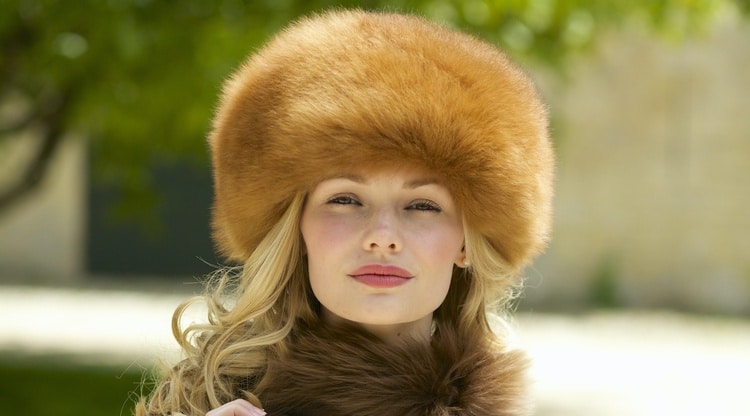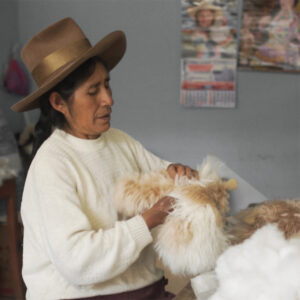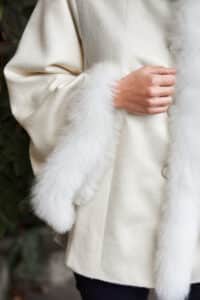A Heritage Preserved: Lacorine’s Lasting Relationship with Our Artisans
Heritage and tradition are at the heart of everything Lacorine does-designs that encapsulate both beauty and utility, timeless pieces that will be


Clothing and apparel manufacturers constantly change their products according to prevailing trends and styles which are often ignited by influencers and the fashion industry media. It has been this way for many years and is a key characteristic of the industry.
2021 however is bringing an unexpected change that many manufacturers in the industry may be poorly equipped to deal with. In addition to clothes that make one look and feel good, consumers are now demanding environmental sustainability and ethically sound Fairtrade production principles, potentially altering the impact the fashion industry has on our planet.
The COVID-19 pandemic has left the fashion industry more reliant on eCommerce than ever before. Consumers are better able to scrutinise a brands ethical stance through its website, compelling it to be more accountable and transparent in matters such as carbon footprint and ethics.
The fashion industry has long been criticised for its detrimental effects on the environment and in some cases their workforce. Turning away from the recognised mainstream brands we find smaller, family-run companies like Lacorine Exquisite alpaca designs which have embraced environmentally responsible Fair-trade principles since their inception and are now beginning to take centre stage.
Why Choose Alpaca Fur and Wool for Fashion? Outstanding quality, softness, warmth, lightness, versatility, sustainability and ethical sourcing.
Closely related to the llama, the alpaca is a species of South American camelid kept in herds that graze on the level heights of the Andes of Southern Peru, Western Bolivia, Ecuador, and Northern Chile at an altitude of 3,500 to 5,000 metres where they spend all winter accumulating fluffy fleece.
Peru is home to the majority of the worlds alpacas and is the number one exporter. It has a long cultural history steeped in alpaca farming and textile production beginning over five thousand years ago with weavers from pre-Inca and Incan cultures.
The highly skilled artisans who live in remote villages may not all be able to read and write but their skills and ancient techniques have been passed down from generation to generation. From the breeders who raise the livestock to the master sorters who learned from their parents how to grade the fleeces, to the spinners and knitters who produce some of the worlds highest quality items for the fashion industry.
Antonia Jacob, founder of Lacorine and AlpacaTeddy.com is herself from Peru. When she started her business in 2006 finding talented Peruvian artisans was challenging and having local knowledge and contacts was the key, enabling her to create lasting relationships centred on trust, respect and a love of the alpaca itself.
Antonia spends a great deal of time in Peru developing her designs with her artisans sourcing the best fibre and ensuring her products are of the highest quality. Alpaca is part of Perus diverse textile heritage supporting more than 120,000 families and the animals are treasured and treated respectfully as they are relied upon for income and survival. When buying an alpaca product, you are directly contributing to the livelihood of the communities who depend on exporting this wonderful fibre.
Alpaca outperforms most other high-quality fibres not only in softness and heat retention but also in lustre, depth of colour and long-life properties.
How is Alpaca Fibre produced?
Alpacas are bred purely for their fleeces. Farmers sheer them annually in the spring and their fleeces are used to produce a multitude of garments including blankets, sweaters, ponchos, gloves, hats and scarves.
Due to the harsh Peruvian Winters many young crias, the term for juvenile alpacas, are overcome by the severe weather conditions and die of natural causes. ALL LACORINE fur is derived from alpacas that have died naturally.
Is Alpaca fibre production sustainable?
Sustainability implies avoiding depletion of natural resources allowing production to be maintained indefinitely in ecological balance.
Accordingly, alpaca fibre production is supremely sustainable.
The fleeces from which the yarn is spun are derived from annual shearing which keeps the animals healthy.
Alpaca herds live together in the Andean highlands above 3,800 metres grazing on remote land unsuitable for agriculture.
Alpacas are never killed for their fur. They are sacred in the local culture and herdsmen rely on the animals shearing during their 17-year lifespan for their livelihood.
The harsh winters are responsible for a 7-8% mortality rate among young crias and it is only these animals that have succumbed to the natural elements that are collected and used for fur products.
The scarves, hats and teddy bears made from the precious fur are all handmade with little or no carbon footprint.
The Benefits of wearing Alpaca
Alpaca wool is warmer, lighter, softer and stronger than merino wool.
All sheep produce a wax called Lanolin to protect their fleeces from the rain which causes an itchy allergic reaction in some people. Alpaca wool contains no lanolin.
Unlike sheep wool and cashmere, alpaca fibre does not pill.
Alpaca is lightweight, breathable and soft, not bulky and although the fibres are fine they are also incredibly durable, unlike cashmere.
Alpaca has water-resistant properties and absorbs little humidity from the surrounding environment and has is thermally insulating, making it perfect for winter wear, as well as for accessories for outdoor sports such as hiking and skiing.
Take a look at the wonderful fashion collections we have available.
We realise, it is just as important now as ever to help support small business as trade is being taken away from the high street and featuring more firmly online. Jumponthevape is a typical example of how their business has altered recently. For alternative online fashion style and ideas take a look at Dimepiece la for all-round fashion and accessories.
Heritage and tradition are at the heart of everything Lacorine does-designs that encapsulate both beauty and utility, timeless pieces that will be

A love of nature has always been at the heart of Lacorine’s unconditional passions. We see ourselves as a luxury sustainable fashion

In the fast-paced world of fashion, where trends rise and fall, it’s rare to encounter a timeless product that stands as a
| Cookie | Duration | Description |
|---|---|---|
| cookielawinfo-checkbox-analytics | 11 months | This cookie is set by GDPR Cookie Consent plugin. The cookie is used to store the user consent for the cookies in the category "Analytics". |
| cookielawinfo-checkbox-functional | 11 months | The cookie is set by GDPR cookie consent to record the user consent for the cookies in the category "Functional". |
| cookielawinfo-checkbox-necessary | 11 months | This cookie is set by GDPR Cookie Consent plugin. The cookies is used to store the user consent for the cookies in the category "Necessary". |
| cookielawinfo-checkbox-others | 11 months | This cookie is set by GDPR Cookie Consent plugin. The cookie is used to store the user consent for the cookies in the category "Other. |
| cookielawinfo-checkbox-performance | 11 months | This cookie is set by GDPR Cookie Consent plugin. The cookie is used to store the user consent for the cookies in the category "Performance". |
| viewed_cookie_policy | 11 months | The cookie is set by the GDPR Cookie Consent plugin and is used to store whether or not user has consented to the use of cookies. It does not store any personal data. |